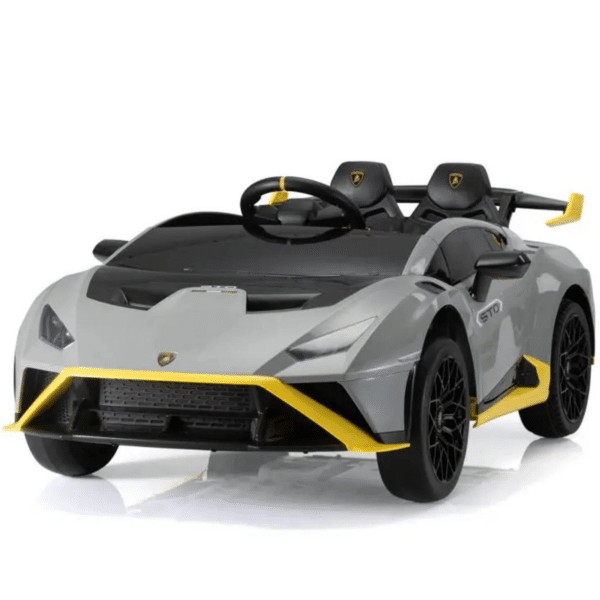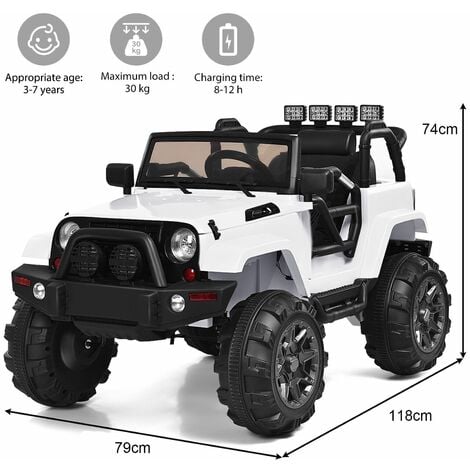Free News For Deciding On Kids Ride On Cars
Free News For Deciding On Kids Ride On Cars
Blog Article
What Do I Need Know About Battery Life & Charging Time For An Electric Kid's Car?
Knowing the battery's life and the charging time of an electric ride-on kids car is vital to making sure that your kids have uninterrupted playtime and maximum performance. What you need to understand the battery type
The majority of electronic ride-on vehicles designed for children are powered by rechargeable batteries. They typically are lithium-ion or lead-acid batteries. Lithium-ion batteries typically have longer battery life and faster charging times compared to lead-acid batteries.
Battery Capacity -
The size of the battery that is measured in amperehours (Ah) or watthours(Wh) is the determining factor for the length of time a vehicle can run on a single charge. Battery capacity is vital since it determines the length of time the ride-on vehicle can run before recharging.
Run Time -
The run time is the maximum quantity of continuous operation an electric vehicle can run on one charge. It is based on a variety of elements, including the motor, the battery, the terrain, and the weight or the rider.
Common run times for electric ride-on cars range between 30 minutes and 2 hours with a single charge. Some battery packs with higher capacity can provide longer durations.
Charge Time
The charging time is the length of time needed for a battery to be fully charged after it is depleted. The charging time varies according to battery capacity, charger specifications, and charging methods.
Charging times for electric ride on vehicles are usually between 8-12 hours. However, certain models offer quicker charging times, particularly when using lithium-ion batteries.
Battery safety and longevity are dependent on charging the battery in accordance with the manufacturer's guidelines. Battery performance can be adversely affected when the battery is charged too high or is undercharged.
Charge Method Charge Method
Electric ride-on cars are often equipped with chargers that plug into a regular home outlet. Some models come with rapid charging features or a smart charger which analyzes the condition of the battery, and then adjusts charging rates accordingly.
Ensure that the charging port and connectors can be used with the charger that comes by the ride-on vehicle to prevent damage to the battery or the electrical system.
Additional Batteries
Certain electric vehicles allow the purchase of additional or spare batteries. This could extend playing time. By having extra batteries available it is possible to swap the battery that is depleted for one that is fully charged to cut down on time.
Understanding the battery and charging time of a kid's ride-on car will ensure that your child and you have fun, uninterrupted playtime as well as exciting adventures. Continuously charging the battery, and following appropriate charging guidelines will to extend the life of your battery and improve its performance. See the top electric kids cars for website tips including 2 seater electric cars, two seater childrens electric cars, electric car ride, ride on car, toy car, electric two seater cars, remote control childrens car, toy with car, electric rideons, pedal car and more. . 
Why Is It That Electric Ride On Vehicles Cater To Different Skill Levels?
The electronic ride-on vehicles typically have multiple speeds, along with controls. These are designed to meet the needs of different levels of ability and make sure that children are secure experience. This is how and why these features are put into place - Safety
Different children have different levels of confidence and competence with regards to riding ons. With a variety of speed settings parents can alter the car's top speed to be able to accommodate the abilities of their child and minimize the chance of accidents.
The speed setting with the lowest speed is perfect for children who are just learning to drive a ride-on motor and the higher speed setting is suitable for older or more experienced children.
Gradual Learning Curve -
The electric ride-on car with different speed settings enables children to develop their driving skills gradually. Beginners will gain confidence as they learn the controls at slower speeds.
Parents can gradually increase the speed as their child gets more adept at driving, creating a sense of achievement and growth.
Parental Control
Some electric ride on cars come with parental controls that allow parents to restrict their child's maximum speed. Parents can have peace of mind with this feature, as they are able to adjust or intervene at any time to ensure the safety of their child.
Based on the model, parental control options may include speed limits on remotes and emergency stop buttons or remote steering capabilities.
Flexibility
The abilities and interests of children may change over time as they grow. Multiple-speed electric ride-on vehicles provide the ability to change and adapt to changes in children as they grow.
When your child is confident and confidence, you can increase the speed to a higher level for a thrilling and more difficult ride. Parents can reduce the speed of their youngest children and friends.
Customization
The capability to tailor and personalize the experience is available with several speeds. Children can choose the speed that is appropriate for their comfort and excitement level.
Certain electric vehicles offer extra controls. For instance they could permit you to alter the braking and acceleration levels.
Overall, electric ride-on cars that have multiple control options and speeds provide the safety, flexibility and flexible experience for children. It is the same regardless of age, ability level, or preferences. These features encourage confidence, skill development, and fun adventures while ensuring parents can supervise and intervene when required to ensure their child's safety. Follow the top read this about Mercedes kids car for site info including two seater electric cars, childrens digger, car toy car toy, electric two seater cars, remote control childrens car, toy toy cars, electric ride along car, toy car for car, toy and car, childrens electric cars and more. . 
What Kinds Of Remote Control Cars Are Available? What Are Some Of The Pros And Cons?
Remote-controlled cars for children, also known as RC cars, are available in a variety of styles, sizes and prices that can accommodate various budgets and tastes. The pros and cons along with the dimensions styles, models, and costs of remote-controlled vehicles for children are listed below.
Electric RC Cars – Batterie-powered remote-controlled cars that are suitable both indoors and out. The cars come in various designs, including buggies and trucks.
Nitro RC Cars – Gas RC cars that have faster speed and higher performance. However, they require more expertise and maintenance to run. Electric RC cars are less bulky and are less costly.
Scale Models are remote-controlled replicas which include vehicles, trucks and airplanes. Scale model sizes range between 1-10 and 1--24. The larger models provide greater detail and more real-world realism.
Sizes -
Remote-controlled cars for kids are available in various sizes. From tiny to full-size replicas, they come in a variety of shapes and sizes. The size of the car can influence the efficiency of a vehicle as well as its speed and the handling characteristics.
Micro-sized cars that are light and compact, are perfect for use indoors and by children who are younger. The larger models provide more performance and endurance, making them suitable for off-roading and racing.
Prices
Prices for remote-controlled children's cars can vary depending on features, brand and quality.
Small electric and nitro powered cars for RC are available in sizes that range from $20 up to $100.
The cost of scale models and hobby grade RC vehicles range from several hundred dollars up to over 1000 dollars, based on their level of performance and precision.
Pros and Pros and
Pros -
Entertainment - Remote controls for children's cars offer hours of entertainment and excitement for adults and kids alike.
Skills Development. Operating a RC car allows children to develop hand-eye-coordination as well as spatial awareness and problem-solving capabilities.
Social Interaction: RC cars can be great for social interaction with friends and family.
Aftermarket parts such as upgrades, accessories, and other aftermarket items can be used to customize many RC vehicles and enhance their performance.
Cons
Cost - Top-quality remote controls for cars for children can be costly, especially hobby-grade models with advanced features.
Learning Curve - Operating an RC vehicle requires practice and skill, and younger youngsters may have difficulty when it comes to the controls at first.
Maintenance: RC cars need regular maintenance including cleaning and oiling. Occasionally, they also require repair or replacement of parts.
Safety Issues Safety Issues RC vehicles could be hazardous if they are not operated responsibly under adult supervision. They may create accidents, fall hazards and electrical dangers.
The best remote control kids vehicles are ones that offer an educational and exciting experience for children of all age groups. When choosing the right one for your child, it is important to be aware of a range of aspects, including the size, cost features, and safety. For older kids, hobby grade RC cars may be a better choice. However, more basic models are also a good option for kids who are young. Check out the top rated Audi ride on car kidscars.co.uk recommendations for more recommendations including remote control childrens electric cars, electric car ride, car for toy, car on ride, race car toy, car toy car toy, electric ride along car, ride on car, pedal car, car electric ride on and more. .